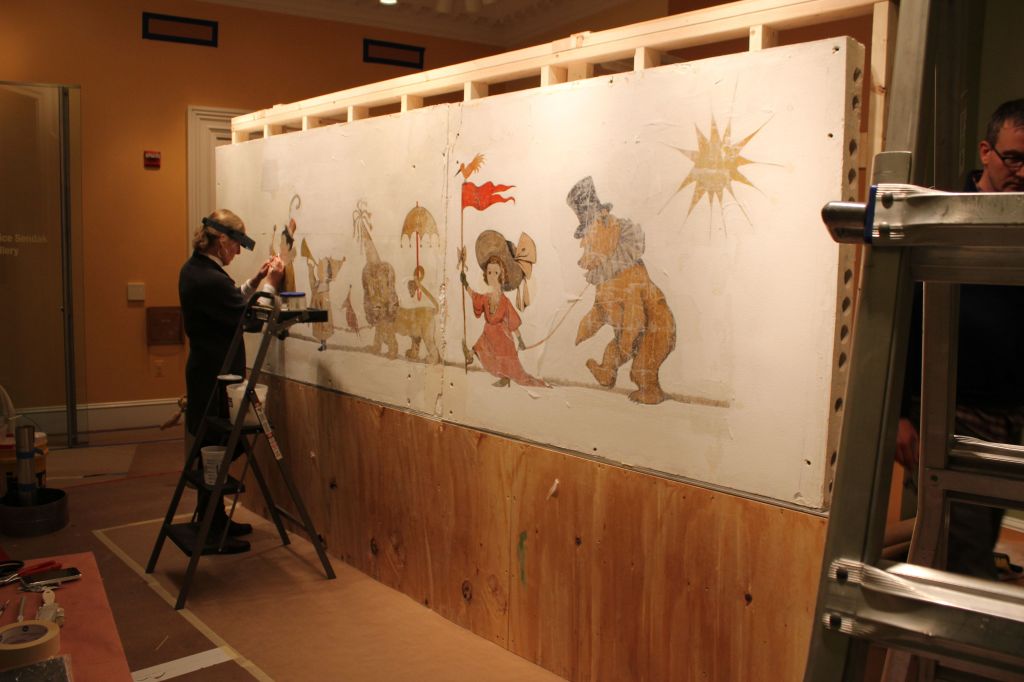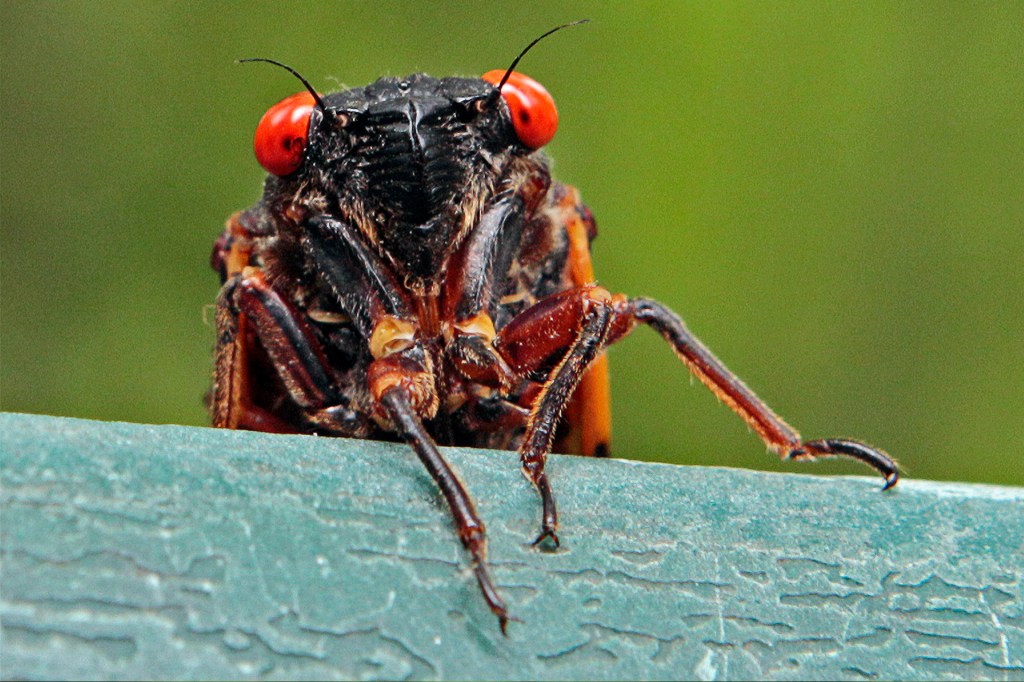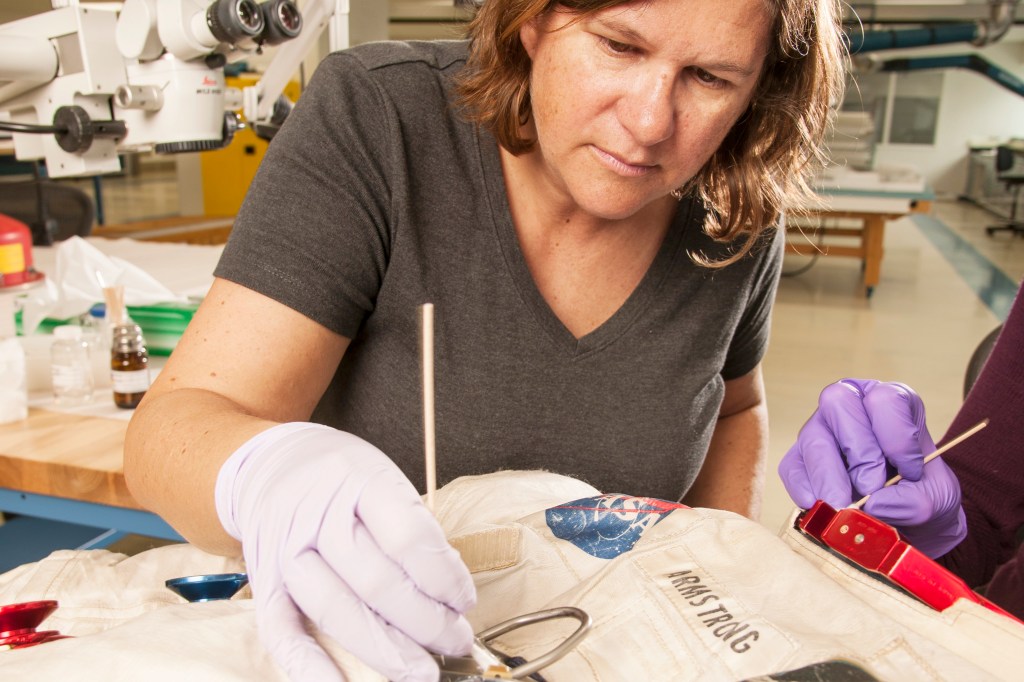
On July 20, 1969, Neil Armstrong became the first person to walk on the moon. The space suit Armstrong wore to the moon has come to symbolize human achievement. In 1971, Armstrong’s suit went to the Smithsonian’s National Air and Space Museum (NASM), in Washington, D.C. It stood proudly on display. But there were changes to the suit. “Over time, the suit started to show signs of deterioration,” Lisa Young told TIME for Kids. Young is an objects conservator at NASM.
“Plastics are tricky to conserve,” Young says. They tend to degrade
degrade
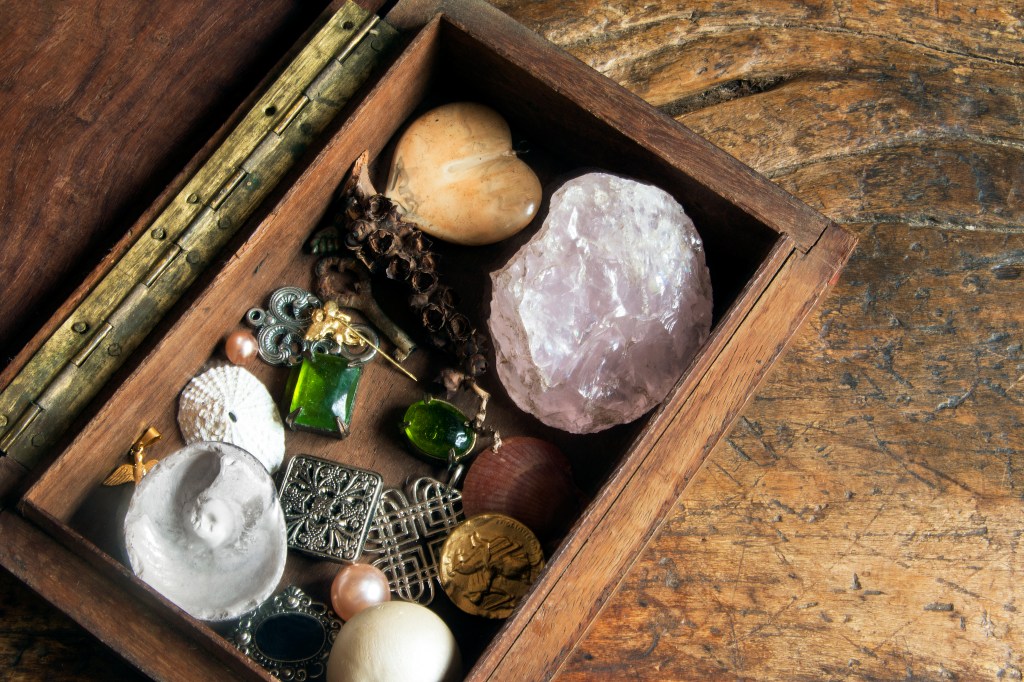 IMAGES SAY MORE THAN WORDS/GETTY IMAGES
to decompose
(verb)
It is best to choose items for the time capsule that will not degrade over time.
over time. Neoprene is a type of plastic in Armstrong’s suit. The material can break into tiny pieces. This can ruin the space suit. NASM wanted to preserve
preserve
IMAGES SAY MORE THAN WORDS/GETTY IMAGES
to decompose
(verb)
It is best to choose items for the time capsule that will not degrade over time.
over time. Neoprene is a type of plastic in Armstrong’s suit. The material can break into tiny pieces. This can ruin the space suit. NASM wanted to preserve
preserve
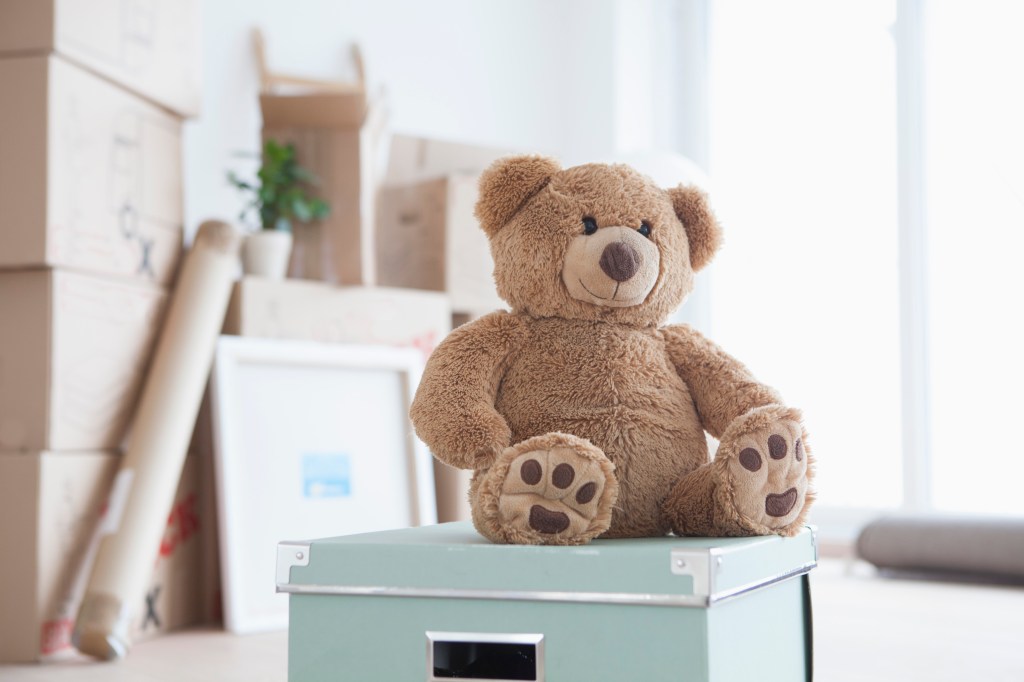 WESTEND61/GETTY IMAGES
to save; to keep something in its original condition
(verb)
Myeisha bought a special box to preserve her favorite stuffed animals.
this treasure. So they removed it from display in 2006.
WESTEND61/GETTY IMAGES
to save; to keep something in its original condition
(verb)
Myeisha bought a special box to preserve her favorite stuffed animals.
this treasure. So they removed it from display in 2006.
Odile Madden is a scientist at the Getty Conservation Institute, in Los Angeles, California. She says sunlight, water, humidity, and dust can cause plastics to degrade.
Yet history can still be saved. Scientists have found that storing plastics in cooler temperatures can slow degradation. So can lower levels of humidity. Armstrong’s suit is now in storage at a temperature of 63°F. The relative humidity there is 30%. These conditions will be the same when Armstrong’s suit returns to a museum display case.
Keeping Art Alive
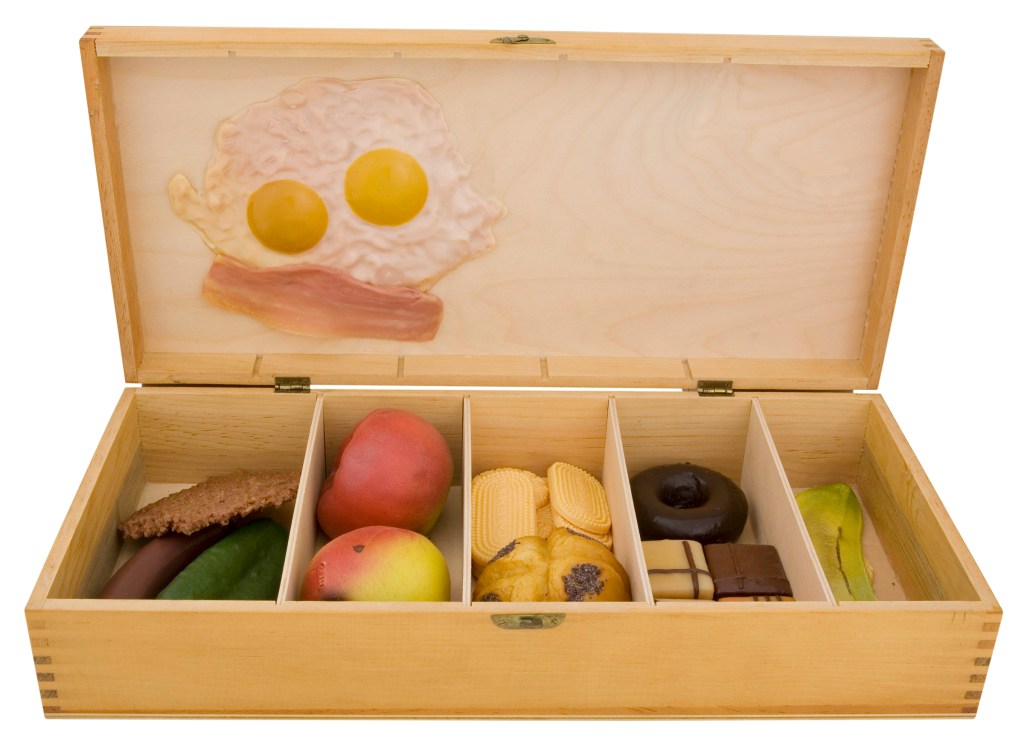
FADING FOOD The plastic banana in Claes Oldenburg’s False Food Selection has flattened.
COURTESY HARVARD ART MUSEUMSPlastic degradation affects art, too. Artist Claes Oldenburg created False Food Selection (pictured) in 1966. It’s made up of plastic food in a wooden box. Some of the food has flattened. Georgina Rayner is a conservation scientist at Harvard Art Museums, in Cambridge, Massachusetts. She says the artwork’s wooden box produces a gas. The gas eats away at the plastic. But Rayner is motivated to conserve this artwork. “Plastics are a part of our history,” she says. “It’s important to preserve them so that future generations can understand the journey we’ve taken.”




